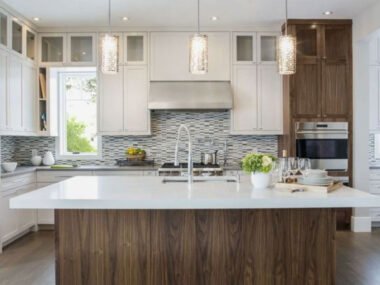A house isn’t just a structure; it’s a sanctuary where memories are made and cherished. The exterior plays a pivotal role in protecting this cherished space. Siding acts as a defense against the elements while contributing to the aesthetic appeal of your home. Proper maintenance is essential for your home’s longevity, but even with the best care, there comes a time when siding needs replacement. Recognizing the signs that indicate this necessity can save homeowners costly repairs in the long run.
Noticeable Damage
One of the most apparent signs that it might be time to replace your siding is noticeable damage. Cracks, warping, or rotting can become increasingly visible as time passes. When the siding becomes compromised, it can create larger issues that affect not only the exterior but also the entire structure of the house.
Rotting wood siding can lead to mold growth. Once mold takes hold, it can spread quickly, leading to serious health issues for the inhabitants. Peeling paint is another indicator of problems beneath the surface. When paint begins to peel or bubble, it typically signifies moisture infiltration. This is a clear signal that your siding can no longer perform its protective function.
High Energy Bills
If you’ve noticed a sudden increase in energy bills, it may result from inadequate insulation or gaps in your siding. Over time, siding can settle or warp, leading to insufficient insulation. This not only allows heat to escape during winter but can also introduce heat during the summer months. Increased energy consumption equates to higher bills, which can strain your budget.
Conducting a simple inspection of your siding can reveal visible signs of air leaks, such as cracks or damaged panels. If gaps are detected, it might be wise to consult with a local siding company to evaluate your options. Properly installed new siding can significantly improve your home’s energy efficiency, keeping your bills in check. Meanwhile, maintaining a comfortable indoor environment for you and your family.
Increased Maintenance Efforts
If keeping up with your siding maintenance requires considerable effort, it may signal that replacement is necessary. Regular upkeep, such as repainting, scrubbing mold, or repairing damaged areas, is typical.
If these tasks seem endless, the existing siding may no longer serve its purpose effectively. Homeowners should not feel overwhelmed by constant repairs. If you find yourself continuously conducting repairs, a full siding replacement could prove to be both a time-saving and cost-effective solution. Quality siding materials available today are designed to be durable and, in many cases, low-maintenance. This means you can spend less time on upkeep and more on enjoying your home.
Fading Color and Curb Appeal
Curb appeal is an essential aspect of home ownership, often reflecting your style and pride in ownership. If your siding begins to appear faded or discolored, it detracts from the overall aesthetic of your home. Over time, the sun’s ultraviolet rays can cause siding materials to lose their luster, making your house look worn and aged. This can affect your satisfaction and the potential resale value.
Consider how much brighter your home could look with new siding that enhances aesthetics and boasts improved functionality. Potential buyers often visualize themselves in a well-maintained home. Investing in new siding could dramatically refresh your home’s appearance and entice future buyers, making it a wise long-term investment. Long-lasting siding is crucial for both the integrity and appeal of your home.

Recognizing key signs such as noticeable damage, high energy bills, increased maintenance demands, and faded appearance will help you determine when it’s time for replacement. By addressing these issues, you safeguard your property’s value while enhancing your living environment.










